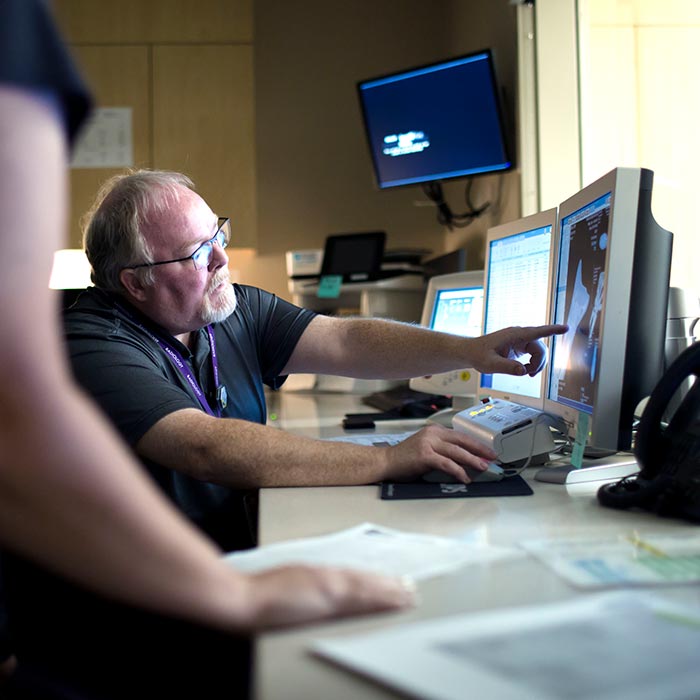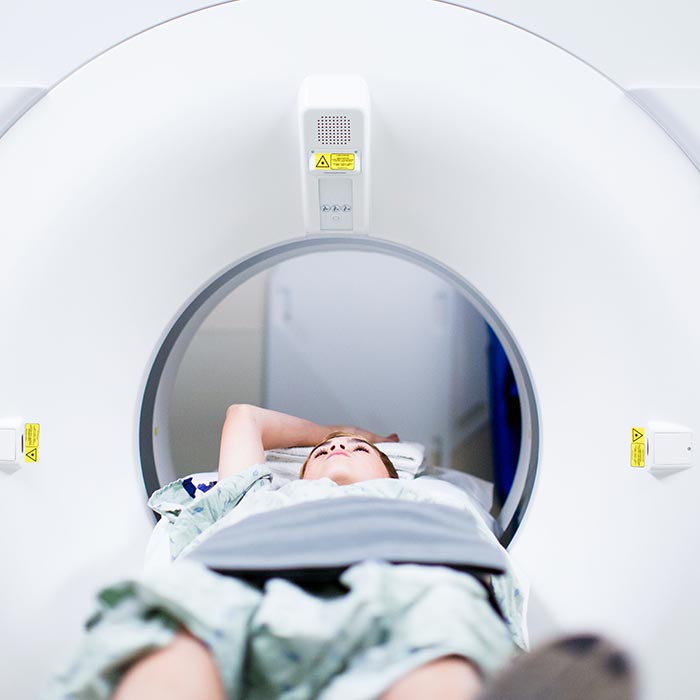
Health knows no bounds
How CIOs are driving digital healthcare transformation
Health professionals:
talk to us about your biggest challenges
Health professionals:
talk to us about breaking boundaries
Fill out our form or call us at 978-659-3500 (8 a.m. - 6 p.m. EST)
The IT function of a hospital used to be inside a back office where staff oversaw operations: managing infrastructure, email systems and networks to ensure that everything ran smoothly.
Today healthcare IT teams face some of the most daunting challenges of any industry: the unprecedented growth of unstructured data, standardizing IT platforms and rising and increasingly sophisticated cyber threats. In mature healthcare systems, the IT function has a pivotal role to help it transform from its traditional role in supporting care towards digital care delivery.
Architect of a revolution
Healthcare providers are already under severe pressure. They are stretched by a rapidly ageing population and increasing incidences of chronic disease; alternative payment models are demanding better health outcomes for less cost; and, patients are now equipped with more health knowledge – and expectation - than ever before. With health systems consolidating, there are pressing new strategic questions facing hospital CIOs: how to get the most out of their IT systems and improve their overall productivity; how to best leverage data from their electronic medical records (EMR) systems to benefit their patients in an acute care setting; and, how to continue care once patients leave the hospital. “The real IT challenge for healthcare CIOs today is trying to see the problem or the opportunity within the hospital, and then figure out how technology, and maybe emerging technology, is going to solve that, but most importantly… maybe how it’s not,” says David Higginson, Chief Information Officer at Phoenix Children’s Hospital.
Data delivered in the right moment
Information in a hospital used to be collected with pens, on notepads, filed away in folders and locked in cabinets. Processes dealt with islands of information. Operations across the emergency room, the surgical suite, the inpatient and the ambulatory areas were all paper-based and completely separated in siloes. With digital processing, every piece of data is collected in IT systems: healthcare data, clinical information, lab results and diagnostic imaging. With the sheer volume of data a hospital collects every day, CIOs are challenged with making the best use of the data to support physicians, drive efficiency and deliver patient outcomes. But care is fragmented and often information systems don’t talk to one another. While the healthcare data is available, it can often be in the wrong format. “We’ve been working so hard on capturing it all and organizing it, and getting it into a usable format, we’re now just starting to really look at it and make sense of it,” says Mr.Higginson. “I think we’re just beginning to scratch the surface of what having a lot of data at our fingertips can actually do to change the way we take care of patients.”
Being the chief architect of a hospital’s digital transformation the CIO’s day-to-day role is still largely focused on IT initiatives such as optimizing their EMRs, improving interoperability between platforms and evaluating new and emerging cyber threats. As a result of the Health Information Technology for Economic and Clinical Health (HITECH) Act of 2009 billions have been invested by healthcare organizations in the implementation of EMR systems. The immediate concern is extracting value from what they already have and getting healthcare IT systems talking to one another so that existing data can be used to support clinical care.
The ease and speed of informatics
All of these pieces of information are very difficult for a routine physician to collate, assimilate and use on a daily basis to make a valid decision from anywhere in the hospital. At Phoenix Children’s Hospital they have addressed this by using data to support the physician and the broader organization, ensuring that the right patient gets the right drug for the right amount of time or that a patient gets delivered a lab result in a timely fashion. “It’s amazing to me, when we look at the number of data points we have, and the amount of data we have across multiple systems, and multiple things that the patient interacts with, how many insights we can really get, by connecting them together for the first time,” Mr.Higginson says. “When you get to real-time data, that is there in the moment and you can use that data to prompt someone to make a different decision, improved outcomes can happen.” In its imaging department Phoenix Children’s is deploying a PACS system, where digital images are now available instantly, at the point of care, making a significant difference in the ease and the speed of access to information. Partnering with Philips has helped to further explore their clinical data in more detail, using cloud services to extract new insights to support clinical care. “I think where partnership gets really interesting is when we start working together on something for the future. We both have an idea of how things may be better, but we’re really trying to collaborate and find something new and solve a new problem,” Mr.Higginson adds.
Share this page with a colleague

You might also be interested in:
“I think we’re just beginning to scratch the surface of what having a lot of data at our fingertips can actually do to change the way we take care of patients.”
David Higginson
Chief Information Officer at Phoenix Children’s Hospital
Meeting the top
challenges in
health informatics



Read more stories and articles
Interoperability in healthcare at an enterprise-wide level
Building partnerships.
Breaking barriers.
We work in partnership with health systems to help drive innovation, support their financial and operational goals, and enable their transformation in a value-driven era. The result can be both operational excellence and more connected, predictive and personalized care delivery.
Let's talk

What are your biggest challenges in informatics? Whether its interoperability across your enterprise or achieving greater standardization of care, we partner with you to deeply understand your infrastructure and operations, and deliver solutions that help your transform your health system. Reach out using the form below to get started.









